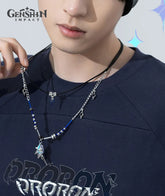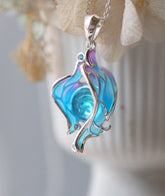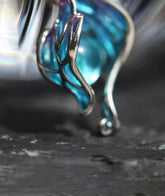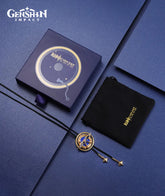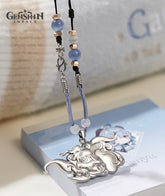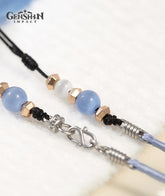Genshin Impact Constellation Investigation - Geo Character
Welcome back to the Genshin Impact channel, Travelers! Today we're organizing all Geo character Constellations for an in-depth look at their name meanings. Chances are you'll spot some favorites-let's jump right in!
1. Zhongli Constellation "Lapis Dei"
The prototype for this Rex Lapis constellation should actually be pointing towards China's mythical Yellow Emperor. As you can see, in the ancient text Records of the Grand Historian: Annals of the Five Emperors, it's written, "The feudal lords all honored Xuanyuan as the Son of Heaven, succeeding Shennong-he was called the Yellow Emperor. Possessing the omen of Earthly Virtue, he was thus named the Yellow Emperor." Now, "Son of Heaven" and "Yellow Emperor" directly parallel Rex Lapis' titles, while "Earthly Virtue" aligns with his Geo element.

The Yellow Emperor was the leader of ancient tribal alliances, the very first of the Five Emperors, revered as the "Primordial Ancestor of Human Culture." In the Classic of Mountains and Seas, the "Yellow Emperor" was just one among many rulers-it wasn't till the Spring and Autumn period that he was elevated to supreme status. Said to be the son of Shaodian and Fubao, his original surname was Gongsun, later changed to Ji-though some argue it was Si. His name was Xuanyuan, or sometimes just Xuan. He established his capital at Youxiong and was also known as the Youxiong Sovereign. Some even refer to him as "Dihong."
Historical records note that because the Yellow Emperor embodied the auspicious omen of Earthly Virtue, he earned his title. During his reign, he sowed grains and plants, pushed hard for agricultural development, and pioneered clothing, boats, chariots, musical scales, and even texts like the Yellow Emperor's Inner Canon.

2. Noelle Constellation "Parma Cordis"
Noelle's Constellation is named Parma Cordis, where "parma" is borrowed from Latin for "round shield," and "cordis" in Latin means "heart."

3. Ningguang Constellation "Opus Aequilibrium"
"玑衡仪座" is the Chinese name of Ningguang's Constellation, it's actually one of the eight large bronze astronomical instruments made during the Qing Dynasty and is also a key ancient Chinese astronomical observation tool. Called the "Precision Equatorial Armillary Sphere," it was mainly used to measure celestial bodies' differences in right ascension, declination, and true solar time.

Started in the ninth year of the Qianlong Emperor's reign, it took ten whole years to complete-finally finished in the nineteenth year of Qianlong (that's 1754 CE), weighing a massive five tons. Made up of three main parts-the dual meridian circles, the equatorial longitude circle with its rotating equatorial ring, and a double-layer right ascension circle-this instrument stands as the very last of the large-scale bronze devices crafted under the Qing Dynasty. Whether you look at its metallurgical techniques or carving methods, it truly reflects the technological level of that era. This ancient instrument, so uniquely Chinese in character and crafted with such intricate detail, is still preserved perfectly today-right on the observation platform of the Beijing Ancient Observatory.

4. Albedo Constellation "Princeps Cretaceus"
Albedo's Constellation is named Princeps Cretaceus, where "Princeps" is a Latin word meaning the first in time or order, and "Cretaceus" refers to the Cretaceous geological strata mainly found in Western Europe, which is actually where the name "Cretaceous Period" comes from.

5. Gorou Constellation "Canis Bellatoris"
The first part of this constellation name actually points to the Shiba Inu, which is a medium-sized and one of the oldest Japanese dog breeds. Known for handling steep hills and mountain slopes with ease, the Shiba Inu's sharp senses make it a top-notch hunting dog again and again.
These dogs are lively and energetic, playing with their favorite toys all day long. They're super alert to outsiders and make great guard dogs for their owners. Especially when it comes to larger animals, they don't back down easily-mice and birds in the grass become both their prey and toys. In Japan, the Shiba Inu is officially recognized as a Natural Monument.

The name "Shiba" comes from Japan's central highlands. It first appeared in print in the early Shōwa period, adopted by the Nihon Ken Hozonkai (Japanese Dog Preservation Society) in their journal Nihon Ken. Since these dogs could cleverly weave through brushwood to assist in hunting, and their reddish-brown coat resembled withered brushwood, that's how they got their name.

6. Arataki Itto Constellation "Taurus Iracundus"
Now, according to the pattern and the Japanese description of the constellation, it actually points to the Heavenly Bull, and the English name can be understood as an "irritable bull." But get this-since Itto's really into bug-fighting, the Chinese name of Arataki Itto's Constellation, "天牛," could also mean the long-horned beetle.

These beetles belong to the suborder Polyphaga, family Cerambycidae. They've got chewing mouthparts and super long antennae, often longer than their own bodies. There are over twenty thousand species worldwide! They're called "天牛" (tiānniú) because they're strong as an ox and skilled at flying through the sky. And also because they make this "click-clack" sound when they move-kinda like sawing wood-so people nicknamed them the "woodcutter beetle."
7. Chiori Constellation "Cisoria"
Chiori's Constellation is named Cisoria, and her Legend Quest is also called the Cisoria Chapter. The term "丝切铗" in the Chinese name of her Constellation actually comes from the Japanese word 「糸切り鋏」 (いときりはさみ), which refers specifically to the U-shaped thread-cutting scissors commonly used by tailors-fitting perfectly with Chiori's identity as a fashion designer.
And get this: the character "铗" not only means "scissors" or "pliers," but it also carries the meaning of "sword" in Chinese. This, in turn, directly ties back to Chiori's weapon design as a sword-wielding character who uses a single-handed blade.

8. Xilonen Constellation "Panthera Ocelota"
The Latin constellation name Panthera Ocelota actually combines the genus names of two feline species. The first part, Panthera, comes from the ancient Greek word πάνθηρ (meaning "panther"). In biological taxonomy, it refers to the Panthera genus within the Felidae family-there are five living species today, specifically lions, tigers, leopards, jaguars, and snow leopards.

As for the second part, Ocelota, it points to the ocelot (also called the tiger cat), which happens to be the largest species in the Leopardus genus of cats. Found mainly in Central and South America, it's often mixed up with jaguars in local cultures. And get this-the name "Ocelota" itself actually traces back to the Aztec term for the jaguar (Nahuatl: ōcēlōtl).

9. Kachina Constellation "Ochotona Princeps"
Kachina's constellation, Ochotona Princeps, is literally the scientific name for the American Pika. This little critter mainly lives in the mountainous areas of western North America, hanging out near or above the treeline on rocky slopes and talus fields. And you know what? It's pretty clear that Kachina's design actually took some real inspiration from this tiny animal-the ears, the fluff, all those cute details totally match up.

10. Yun Jin Constellation "Opera Grandis"
Yun Jin's constellation in Chinese is called "虹章座" (Hóngzhāng Zuò). Here's the thing-"虹" here actually refers to colorful banners, and "章" points to war flags or military standards.

Those vibrant war flags? Yeah, they're basically the ones you see on her back-like the 靠旗 (kào qí) worn by Peking Opera dan role performers. These are those triangular flags (four of 'em!), planted right behind the performer, sometimes called "back-guard flags." Each flag's got dragons embroidered in all kinds of colored threads, plus a long, flowing ribbon attached to it.
In Peking Opera, those kào qí aren't just for show. They amp up the general's fierce vibe, show off the performer's slick moves, and add some dynamic flair to the dance-basically, they're a full-on specialized prop for bringing the character to life.

Alright folks, that's a wrap for this article! I'm really curious-do you Travelers enjoy this kind of lore-heavy piece? Personally, I think for us players, those deep meanings and lore behind the Constellations seriously enrich the character building, and every time I learn more about them, I end up liking them even more.
At last, don't forget to keep following our articles and check out more Genshin merchandise.










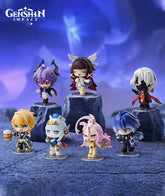

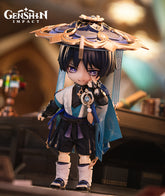
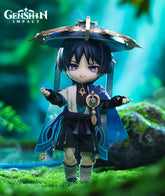
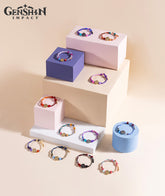
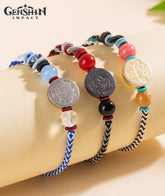


![[Official Merchandise] Wanderer Impression Necklace](http://genshinfans.com/cdn/shop/files/ZT03_00713fd9-fa42-42b0-b5eb-382195bc673e_165x.jpg?v=1739931344)
![[Official Merchandise] Wanderer Impression Necklace](http://genshinfans.com/cdn/shop/files/ZT00_165x.jpg?v=1739931344)
![[Official Merchandise] Alhaitham Impression Necklace / Bracelet](http://genshinfans.com/cdn/shop/files/Genshin-Impact-Alhaitham-Bracelet_165x.jpg?v=1718182625)
![[Official Merchandise] Alhaitham Impression Necklace / Bracelet](http://genshinfans.com/cdn/shop/files/Genshin-Alhaitham-Necklace_165x.jpg?v=1718182626)
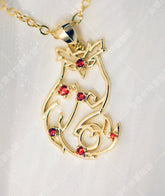
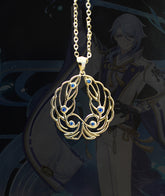
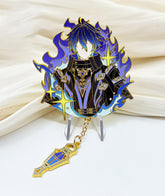
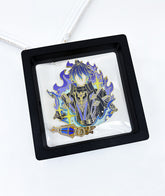
![[Official Merchandise] Kaveh Impression Necklace / Ear Clips](http://genshinfans.com/cdn/shop/files/Genshin-Kavel-Earring_165x.jpg?v=1718180290)
![[Official Merchandise] Kaveh Impression Necklace / Ear Clips](http://genshinfans.com/cdn/shop/files/Genshin-Kavel-Necklace_165x.jpg?v=1718180290)
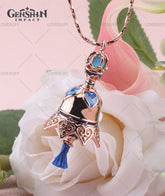
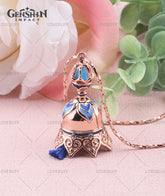
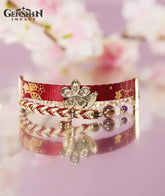
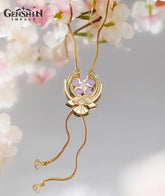
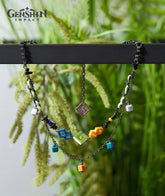
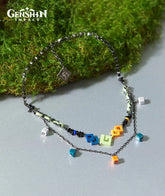
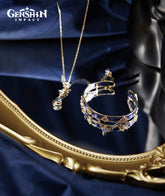
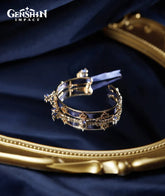
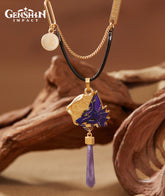
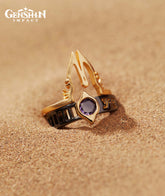
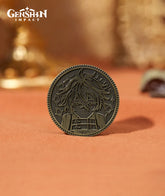
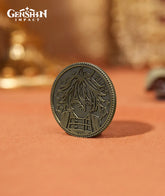
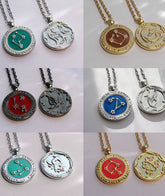
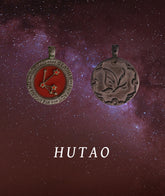
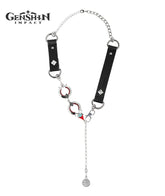
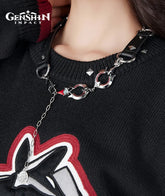
![[Official Merchandise] Tighnari Impression Necklace / Brooch](http://genshinfans.com/cdn/shop/files/genshin-Tighnari-Necklace_165x.jpg?v=1718176014)
![[Official Merchandise] Tighnari Impression Necklace / Brooch](http://genshinfans.com/cdn/shop/files/Tighnari-Brooch_165x.jpg?v=1718176014)

